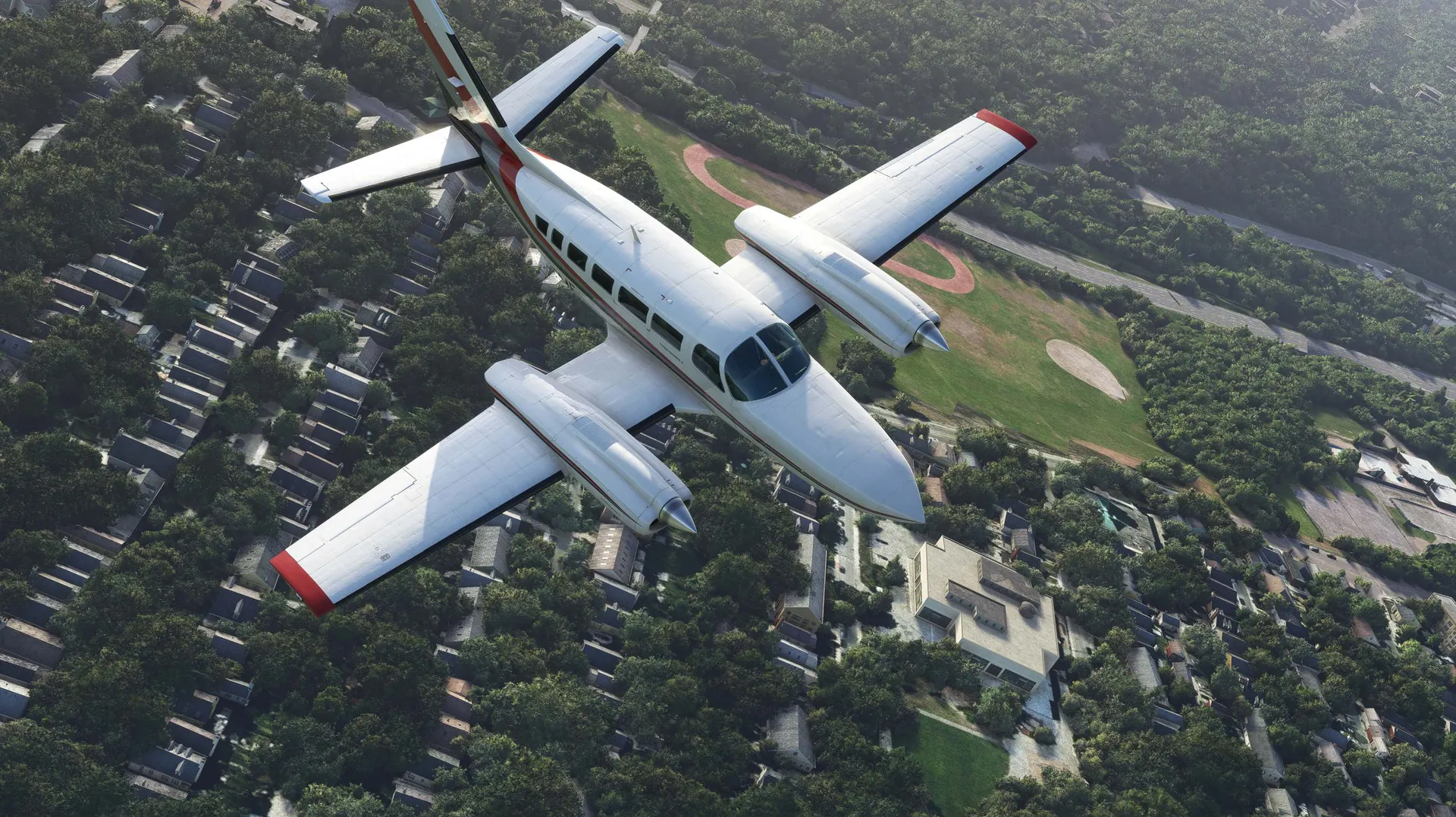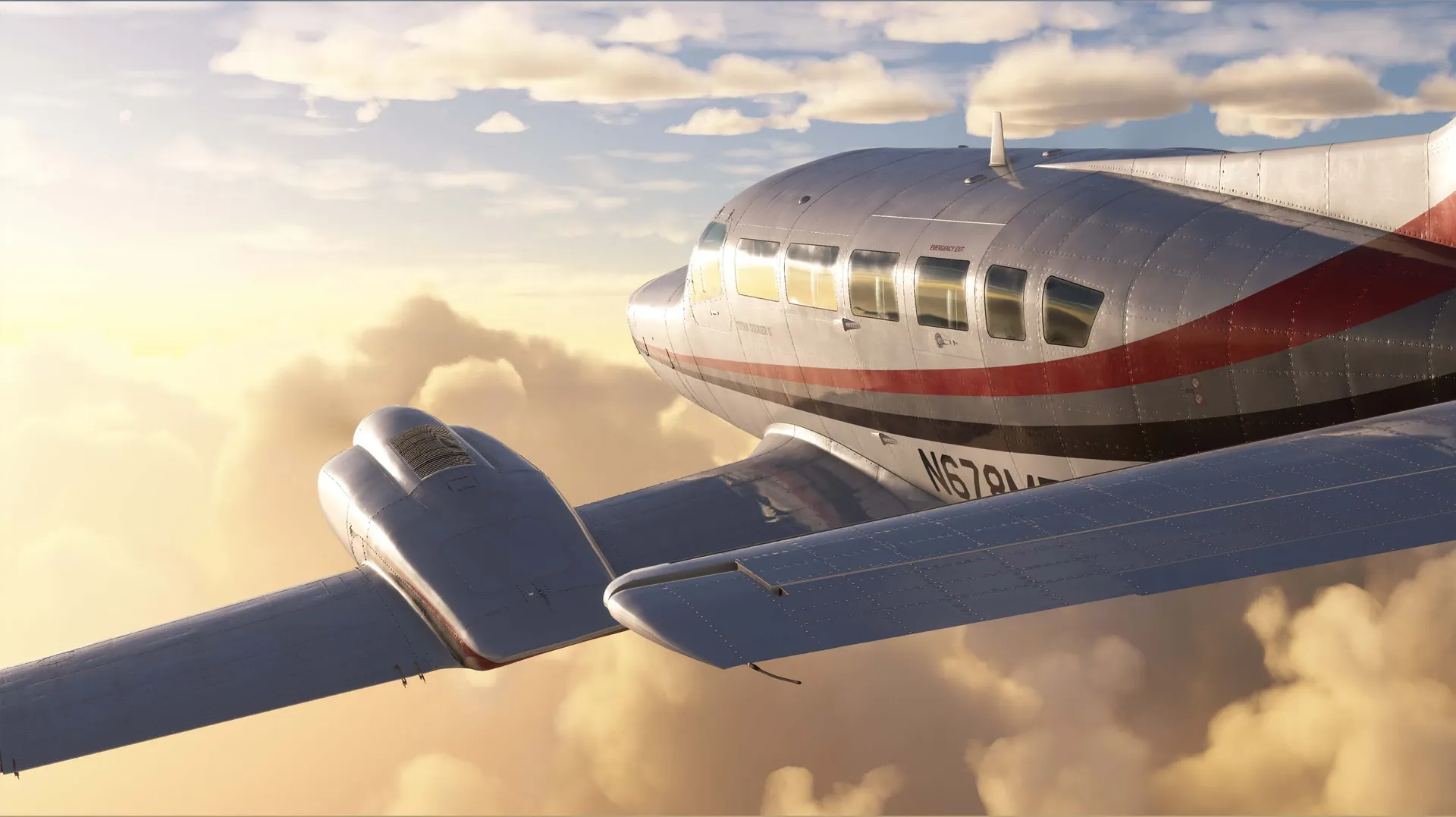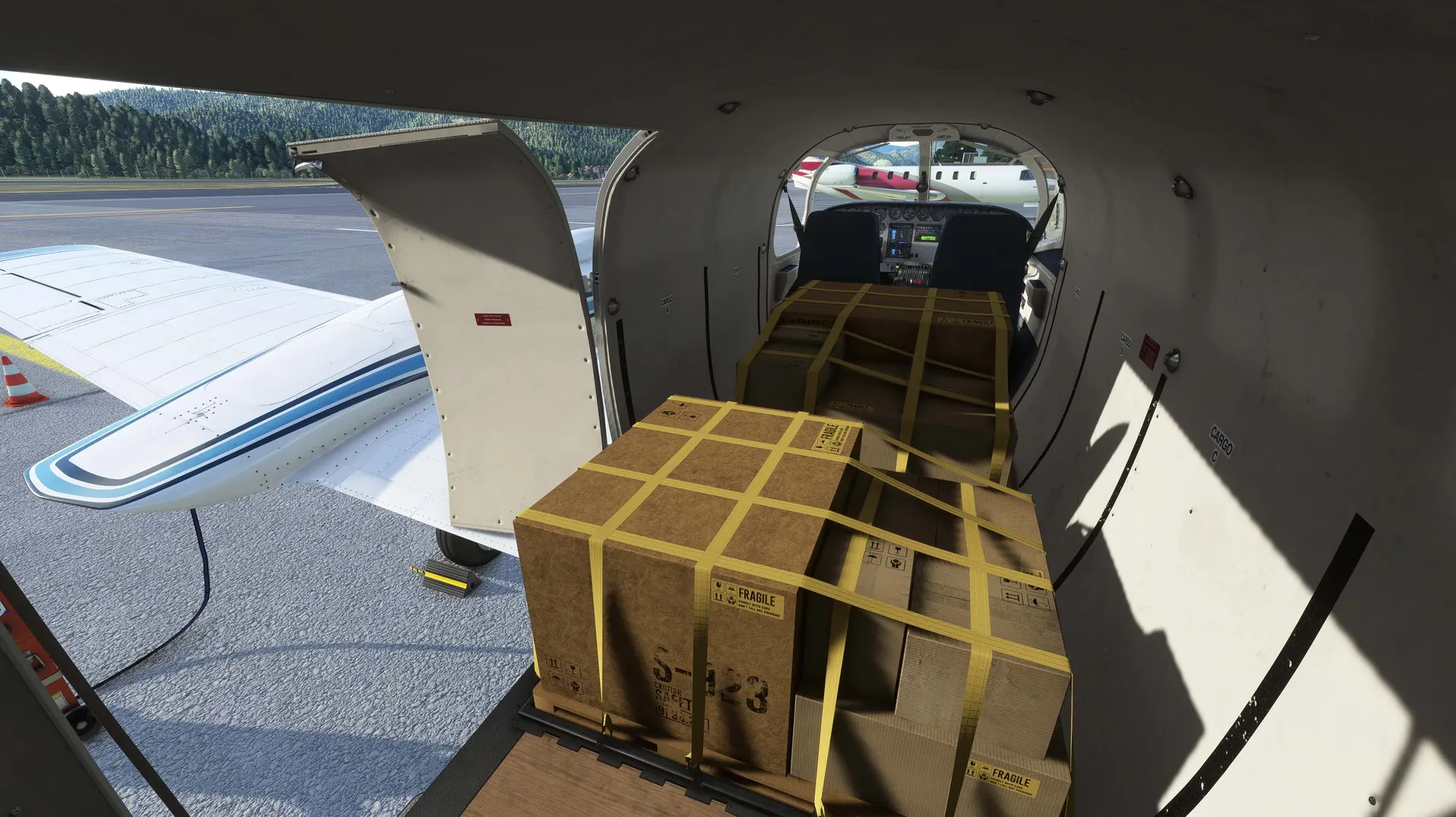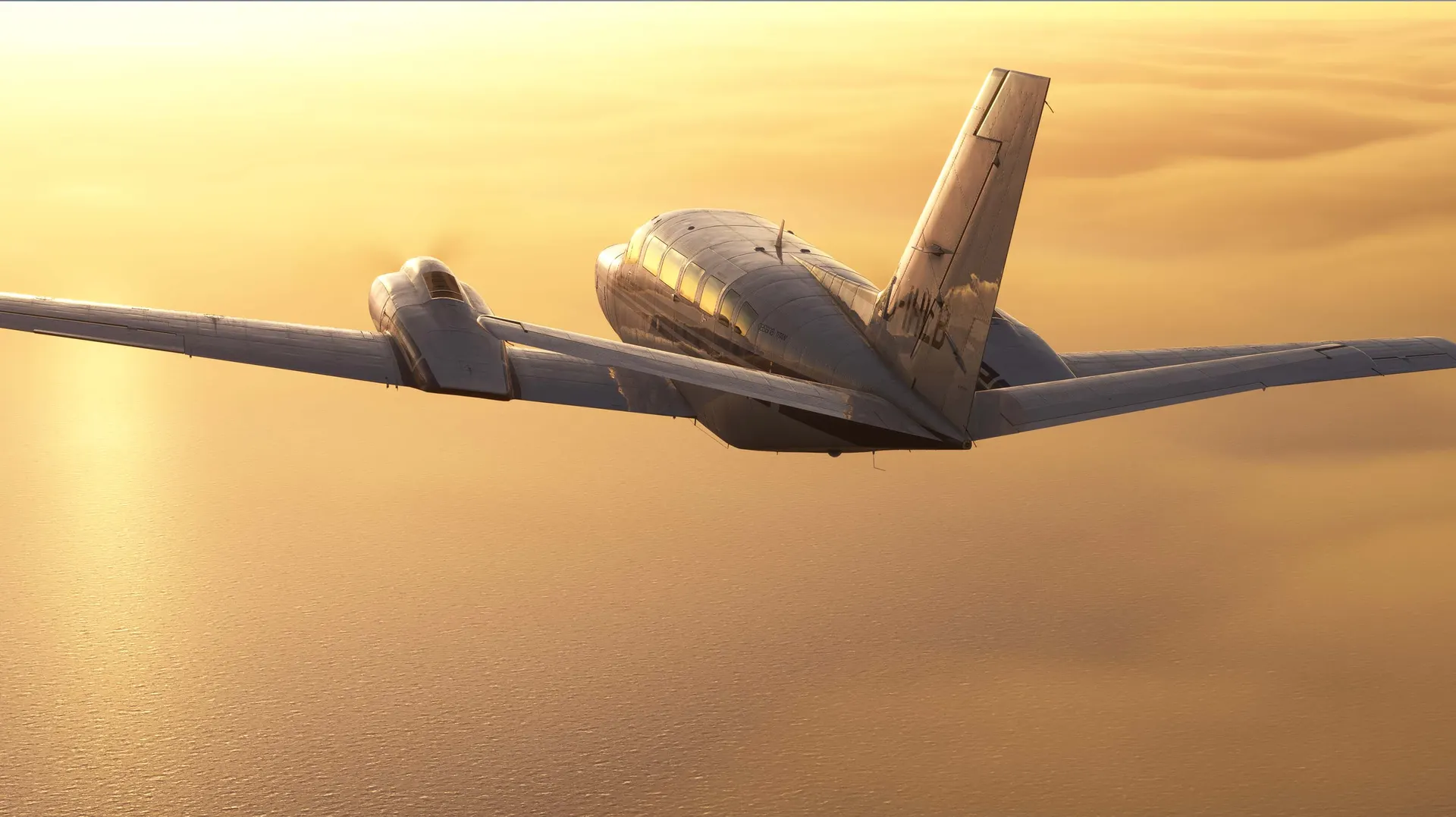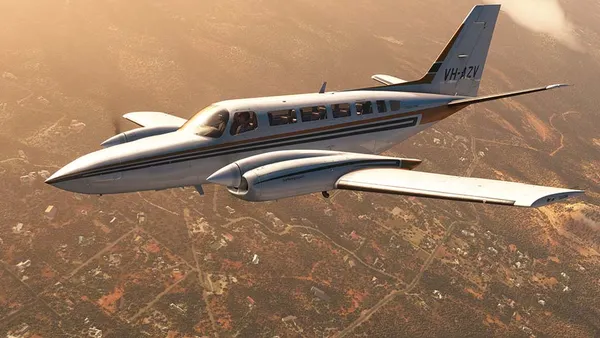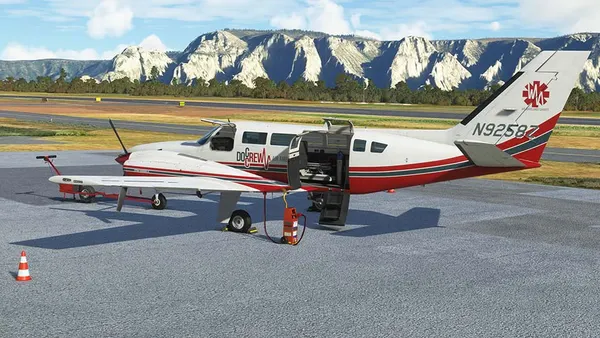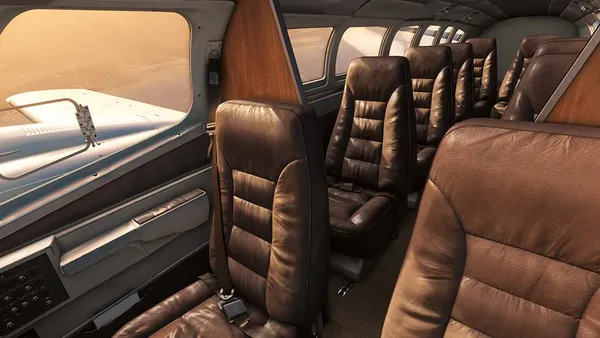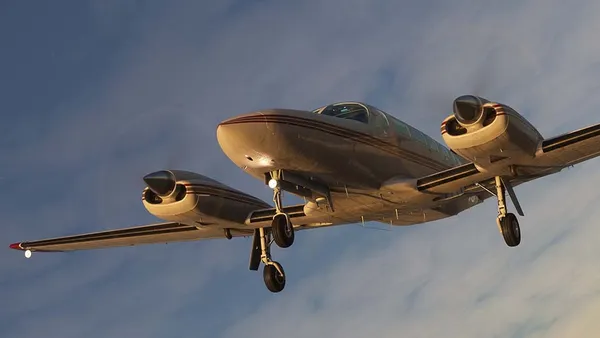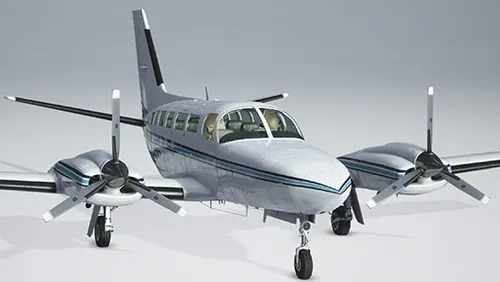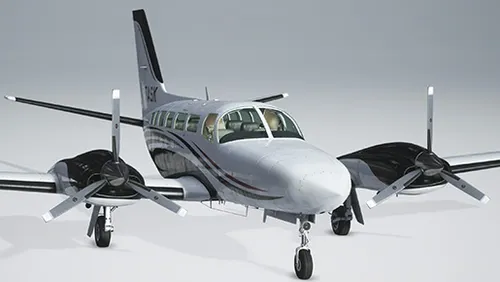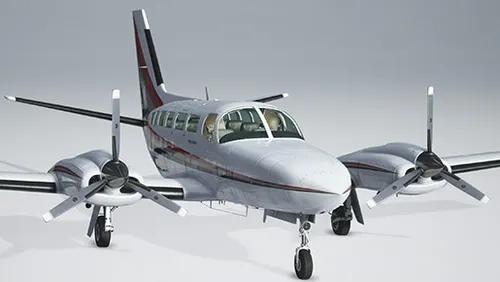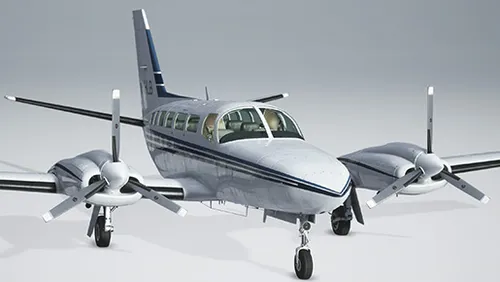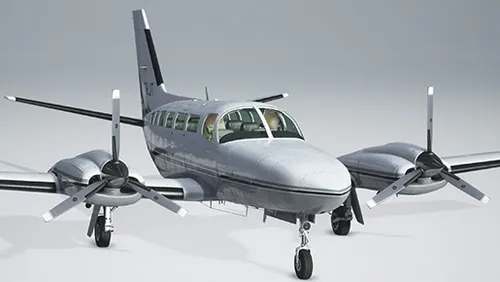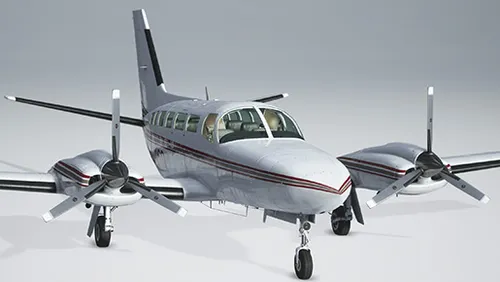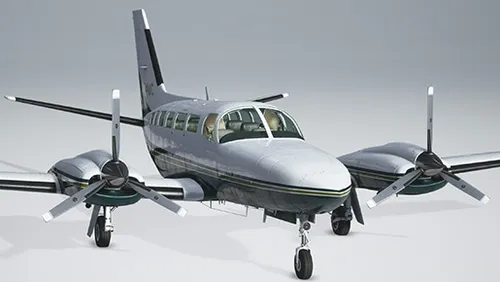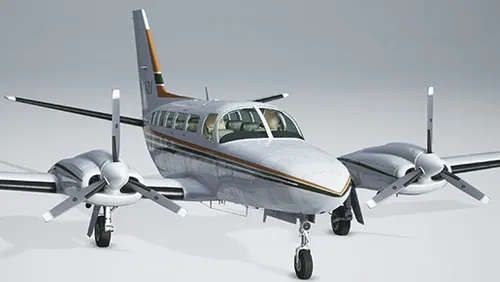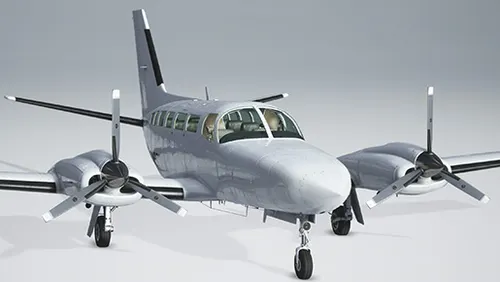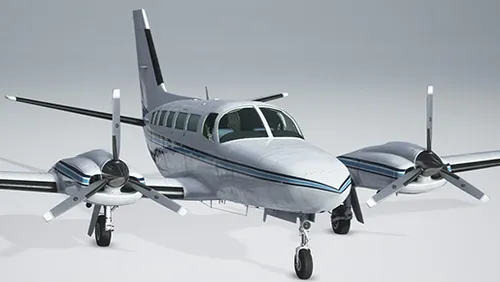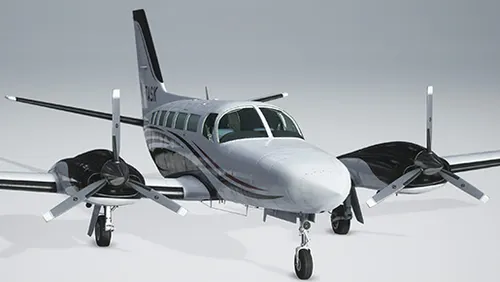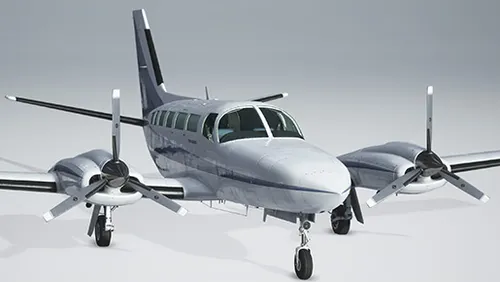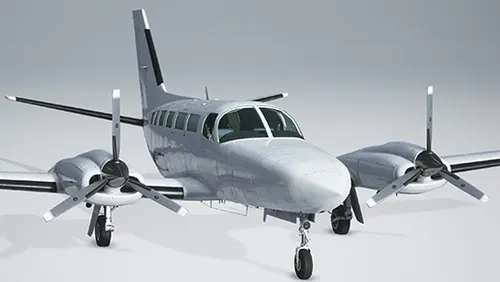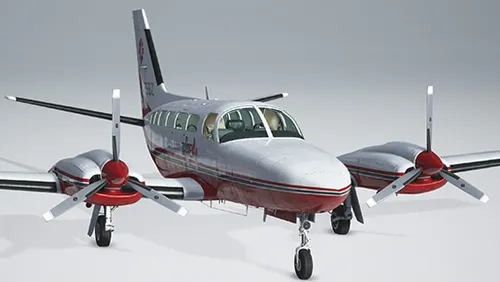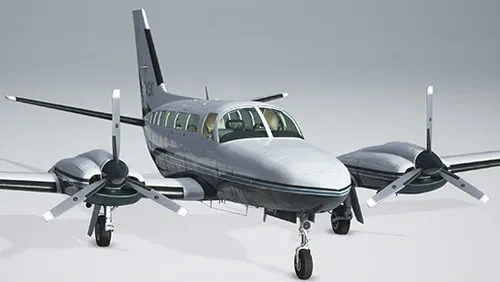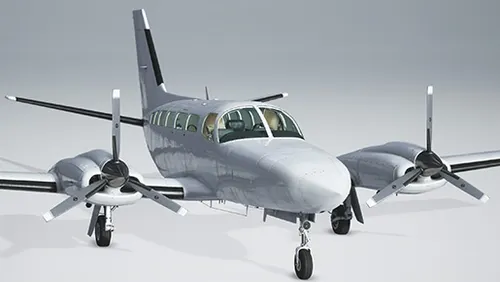The 404 Titan is a low-wing, twin-engine light utility aircraft by American aviation producer Cessna. The Titan can accommodate ten, including two cockpit seats. It can also be fitted as a pure freighter or to carry both passengers and cargo. It took its maiden flight on February 26, 1975 and it entered service in 1976. 396 Titans were built during a production run that spanned from 1976 to 1982. The aircraft proved very successful, both for civil operators and for the militaries of a dozen countries.
Cessna developed the 404 Titan based on their earlier twin-engine model, the 402. The company wanted a platform with greater capacity and longer range. The result was a classic load-hauling workhorse, one that improved a number of aerodynamic characteristics relative to the 402, notably slow-speed handling. Many Titans continue flying to this day, a testament to both its performance characteristics and its durable design and build quality.
The Cessna 404 Titan measures 39 feet, 5 inches in length, stands 13 feet, 3 inches tall, and has a wingspan of 46 feet, 9 inches. It features retractable tricycle landing gear and a standard empennage with a notably large, swept vertical stabilizer.
The aircraft is powered by two turbocharged Continental GTSIO-520 piston engines that each deliver 375 horsepower to 3-blade constant-speed propellers. The 404 Titan cruises at 163 KTAS, stalls at 70 KIAS, and has a maximum speed of 232 KTAS. It has a range of 1,840 miles, a service ceiling of 26,000 feet above sea level, and a climb rate of 1,575 feet per minute.
The Cessna 404 Titan is a powerful all-around utility aircraft that has proven itself over the decades to be reliable and rugged. Stable and intuitive to control from takeoff to landing, the Titan is favorite among aviators who have had the pleasure of operating it.
